
What are GIA Diamonds?
Understanding the 4Cs of Diamonds
Once you get a grasp on how they affect the look and price of diamonds, you’ll be ready to effectively select high-quality options within your price range.
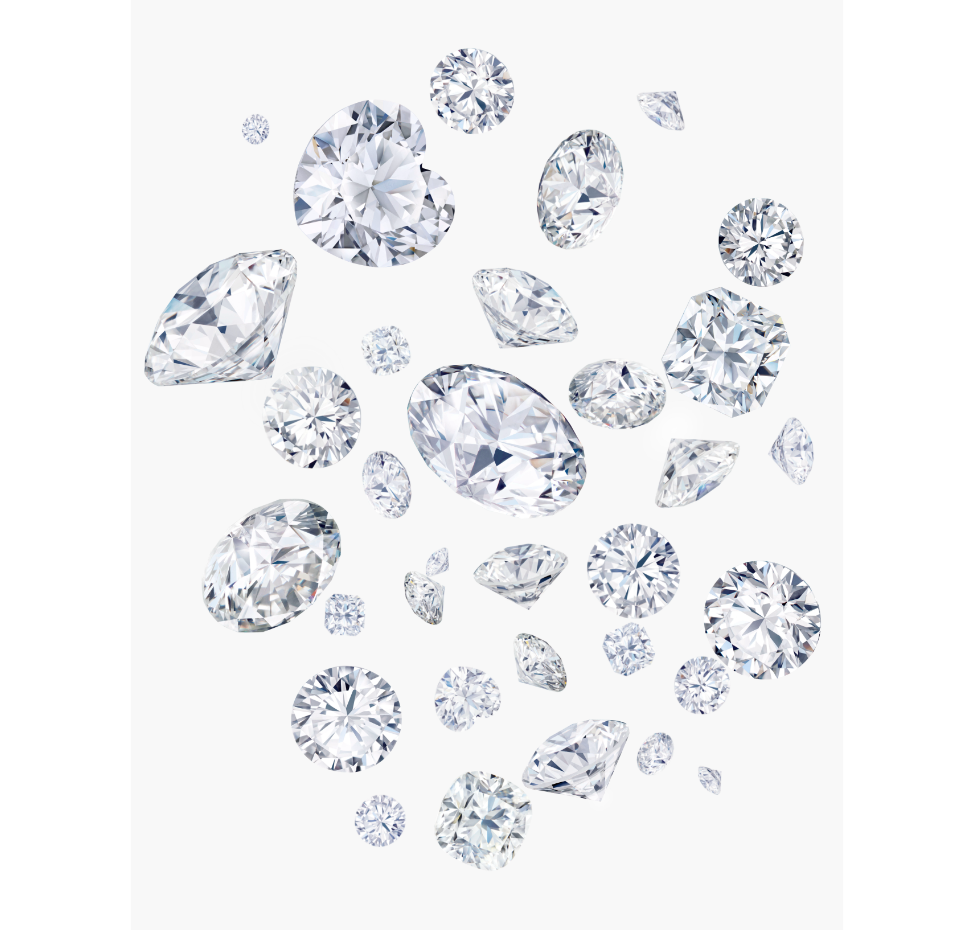
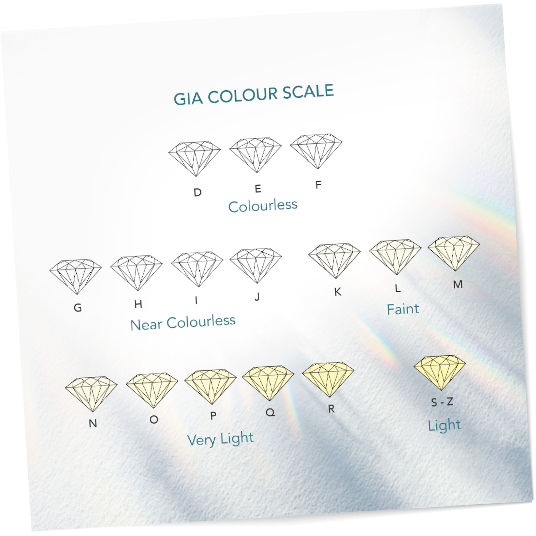
Colour
If you would like to have a diamond that is rare, you can aim for D, E, F colour grades, though you should note that the difference between D, E and F colours are not substantial unless inspected closely by a professional.
For a diamond with little or no noticeable colour to the naked eye, a near-colorless grade of G-I is still beautiful to have. The little tint, be it yellow or brown, is most visible when you compare all the grades side by side.
Cut
The Cut grade is also the most important C, because
if you prioritise this, you can get a diamond with maximum sparkle.
GIA classifies diamonds in five cut grades – Excellent, Very Good, Good, Fair and Poor. They are determined based on a combination of various proportion sets, which refer to the relationship between table size, crown angle and pavilion depth. Cut with proper proportions, light is returned out of the diamond.
If it’s cut too shallow, light leaks out of the bottom;
too deep and it escapes out of the side.
We only curate diamonds with a cut grade of ‘Good’ and above to ensure maximum satisfaction for your diamond quality.
A diamond which scores Excellent for Cut, Polish and Symmetry grades is the top in maximising light performance, and called a Triple Excellent diamond, which means that it is a diamond with the best possible craftmanship, and the diamond gives off maximum light and fire while having an
attractive pattern.
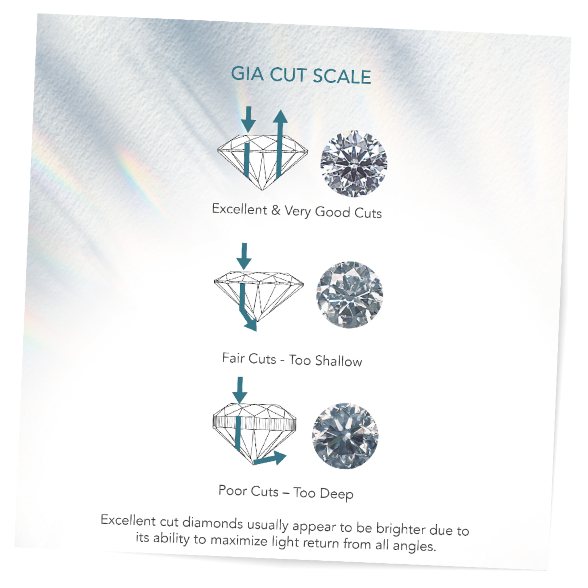


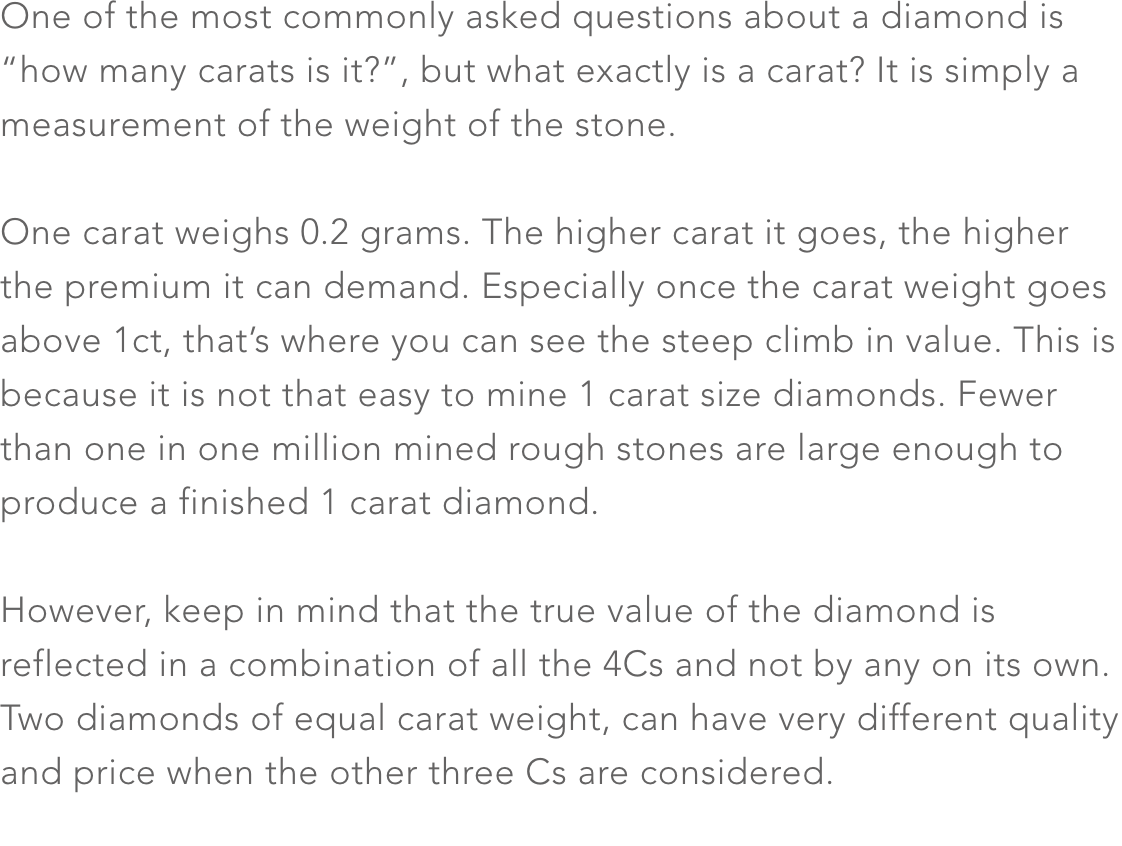



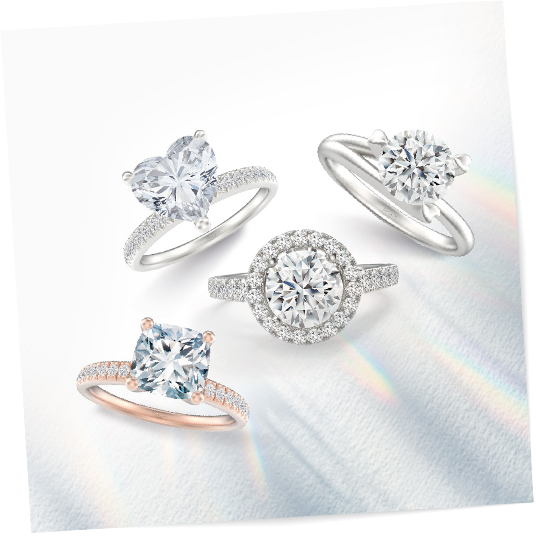

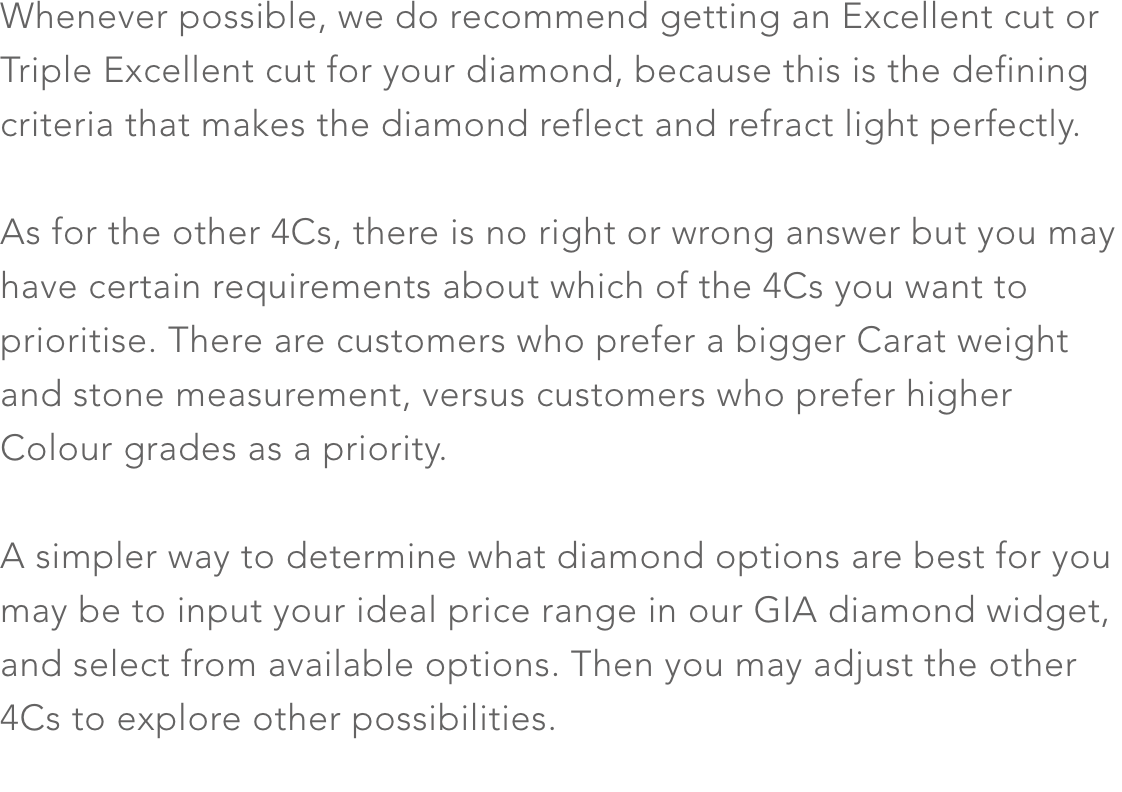
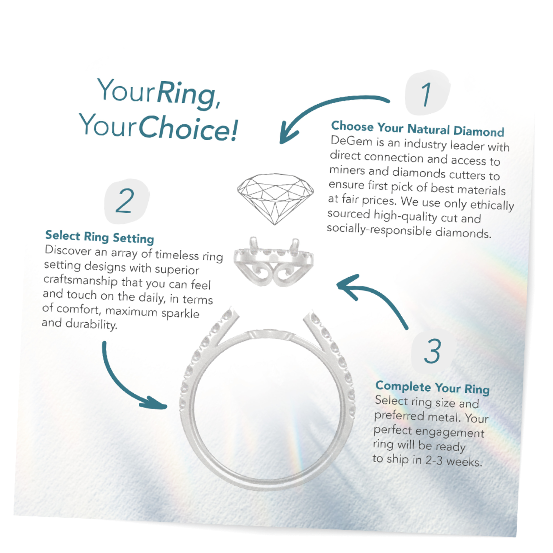

As an expert in sourcing gems straight from a strong supply of ethical miners, and owner of a homegrown in-house factory, DeGem caters to discerning customers who appreciate premium construction, finishing and quality.
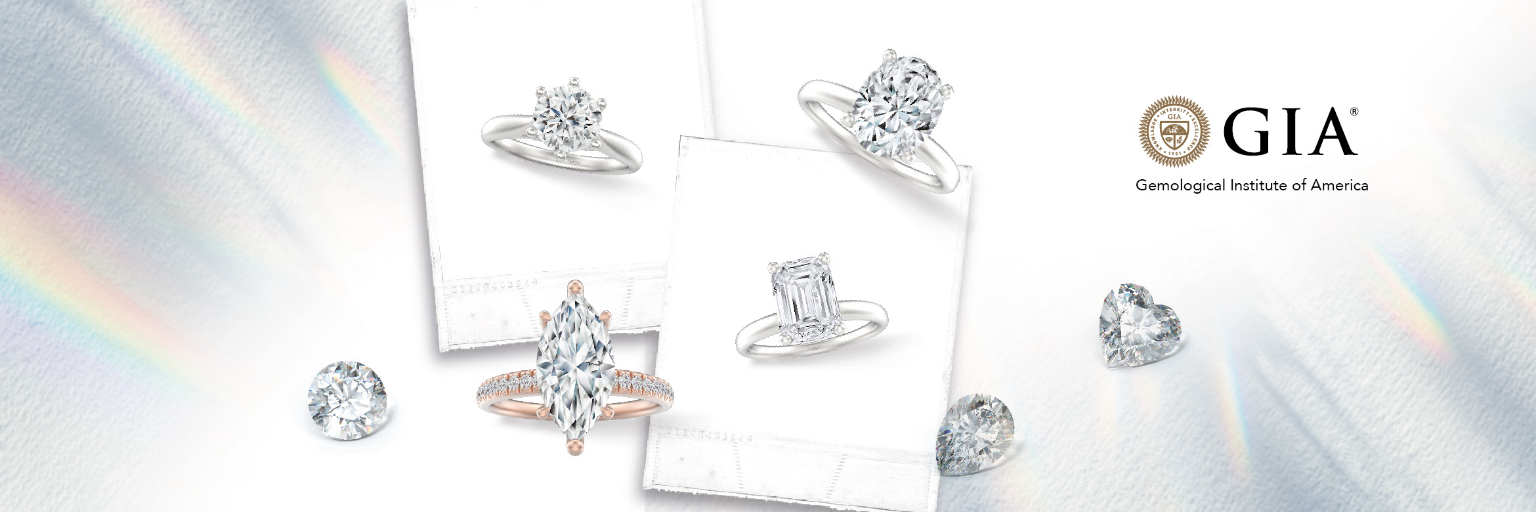
What are GIA Diamonds?
GIA diamonds simply mean natural diamonds that are graded by the Gemological Institute of America (GIA), which
is the industry’s leading independent third party grading laboratory. As a nonprofit organisation, GIA is the
pioneer in creating the Diamond 4Cs and the International Diamond Grading System™, which to-date are still the
universal benchmarks by which all diamonds are judged.
The GIA diamonds offered on our website are
graded by GIA, and thus come with their own GIA grading reports, or known as certificates in the industry.
This report is an unbiased assessment of a stone’s quality characteristics. It is what the insurance industry
uses as a basis for insuring your diamond, and what the diamond industry recognises worldwide for the resale
of any diamond.
Understanding the 4Cs of Diamonds
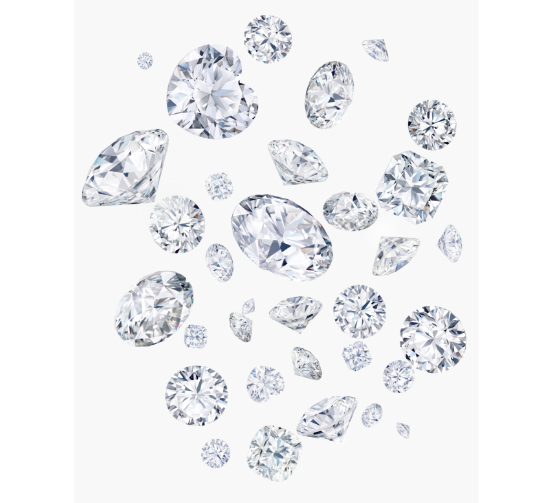
When you first begin your search for diamonds, you’re going to learn about the 4Cs – Cut, Colour,
Clarity
and Carat. These are a combination of standard factors to determine the quality and value of
diamond.
Once
you get a grasp on how they affect the look and price of diamonds, you’ll be ready to effectively select
high-quality options within your price range.

Colour
Diamonds come in an assortment of colours, but the most valued colour is actually an absence of colour. The
less colour in the diamond, the rarer and more valuable it is. D is the highest grade in terms of rarity,
which is an icy white, and the colour grades move down from D to Z.
If you would like to have a
diamond that is rare, you can aim for D, E, F colour grades, though you should note that the difference
between D, E and F colours are not substantial unless inspected closely by a professional.
For a
diamond with little or no noticeable colour to the naked eye, a near-colorless grade of G-I is still beautiful
to have. The little tint, be it yellow or brown, is most visible when you compare all the grades side by side.
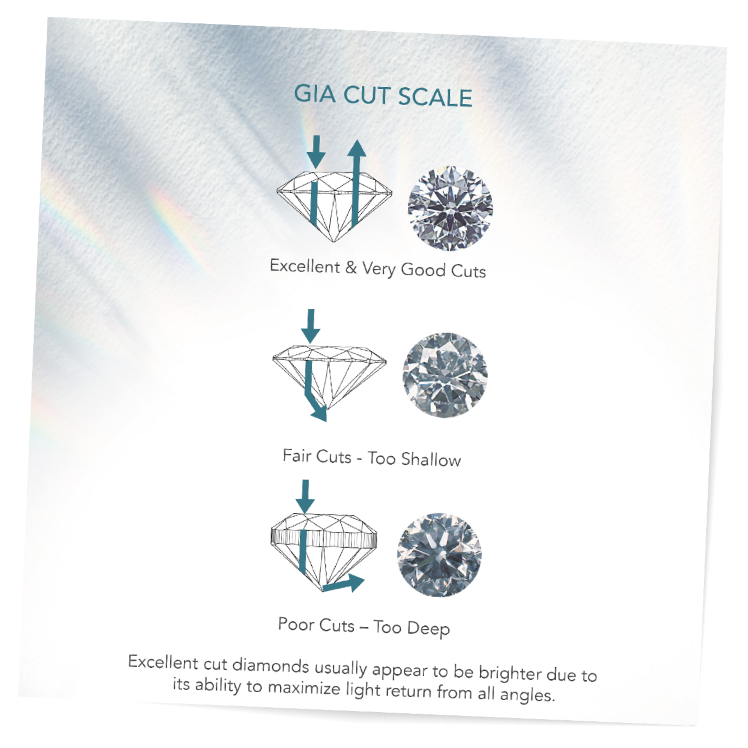
Cut
A diamond’s cut is not so much about its shape, but more of a measure of light performance. The Cut grade is
the measure of a diamond’s light performance, based on how well its proportions are cut by stone cutters to
refract and reflect light to show fire, brightness and scintillation.
The Cut grade is also the
most important C, because if you prioritise this, you can get a diamond with maximum sparkle.
GIA
classifies diamonds in five cut grades – Excellent, Very Good, Good, Fair and Poor. They are determined
based on a combination of various proportion sets, which refer to the relationship between table size, crown
angle and pavilion depth. Cut with proper proportions, light is returned out of the diamond. If it’s cut too
shallow, light leaks out of the bottom; too deep and it escapes out of the side.
We only curate
diamonds with a cut grade of ‘Good’ and above to ensure maximum satisfaction for your diamond
quality.
A
diamond which scores Excellent for Cut, Polish and Symmetry grades is the top in maximising light
performance, and called a Triple Excellent diamond, which means that it is a diamond with the best possible
craftmanship, and the diamond gives off maximum light and fire while having an attractive pattern.
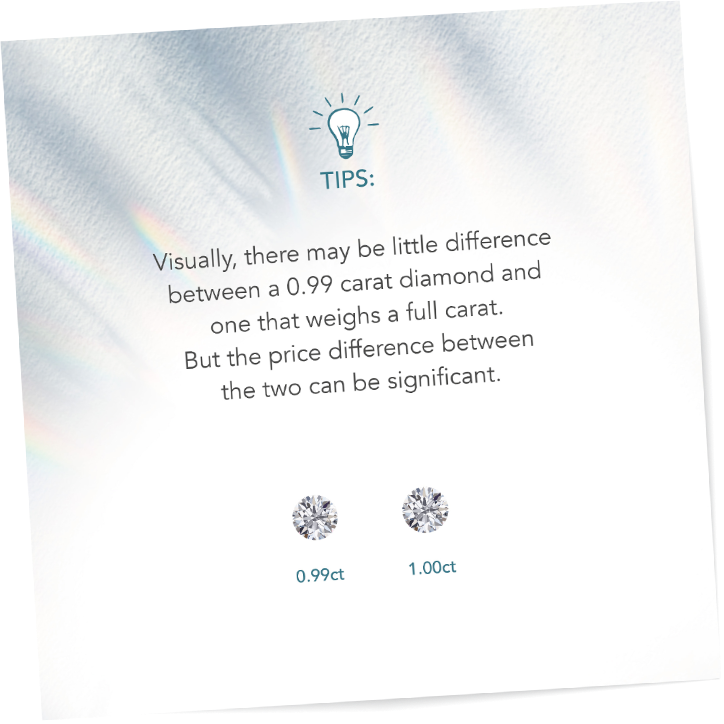
Carat
One of the most commonly asked questions about a diamond is “how many carats is it?”, but what exactly is a
carat? It is simply a measurement of the weight of the stone.
One carat weighs 0.2 grams. The
higher carat it goes, the higher the premium it can demand. Especially once the carat weight goes above 1ct,
that’s where you can see the steep climb in value. This is because it is not that easy to mine 1 carat size
diamonds. Fewer than one in one million mined rough stones are large enough to produce a finished 1 carat
diamond.
However, keep in mind that the true value of the diamond is reflected in a combination of
all the 4Cs and not by any on its own. Two diamonds of equal carat weight, can have very different quality and
price when the other three Cs are considered.
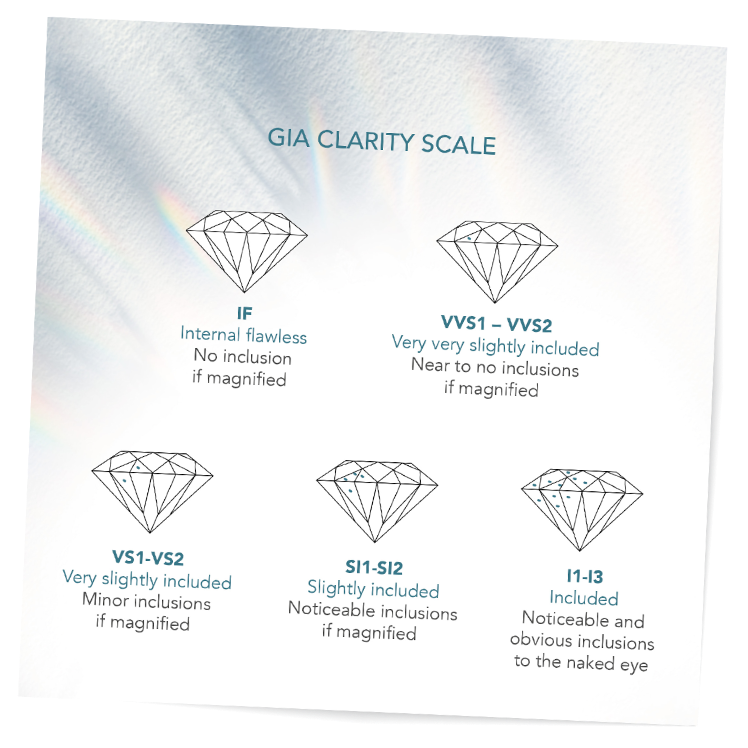
Clarity
It is common for natural diamonds to have microscopic imperfections as a result of exposure to extreme heat
and pressure within the earth. Think of them as the diamond’s birthmarks. These characteristics are called
‘inclusions’ when they are within the stone and ‘blemishes’ when they are on the surface.
Clarity refers to the extent to which these imperfections are present; the less there are, the
higher the value of the stone. The GIA Clarity Scale has six categories for grading, but most impurities are
invisible to the naked eye.
The VS (Very Slightly Included) clarity grade refers to diamonds that
have small inclusions that are difficult to identify without magnification. While VS1 diamonds have
inclusions that are smaller in number, size and location, VS2 diamonds are lower in price and also usually
eye-clean. This means that the inclusions tend to not be visible to the untrained eye, making it a popular
choice for engagement rings.
A more affordable option would be the SI1 (Slightly Included)
clarity grade. As its name suggests, SI diamonds have small imperfections that can be detected with ease
using magnification; but here’s a tip: choose one with inclusions that are not in a central position in the
stone and it may appear flawless to the casual observer.
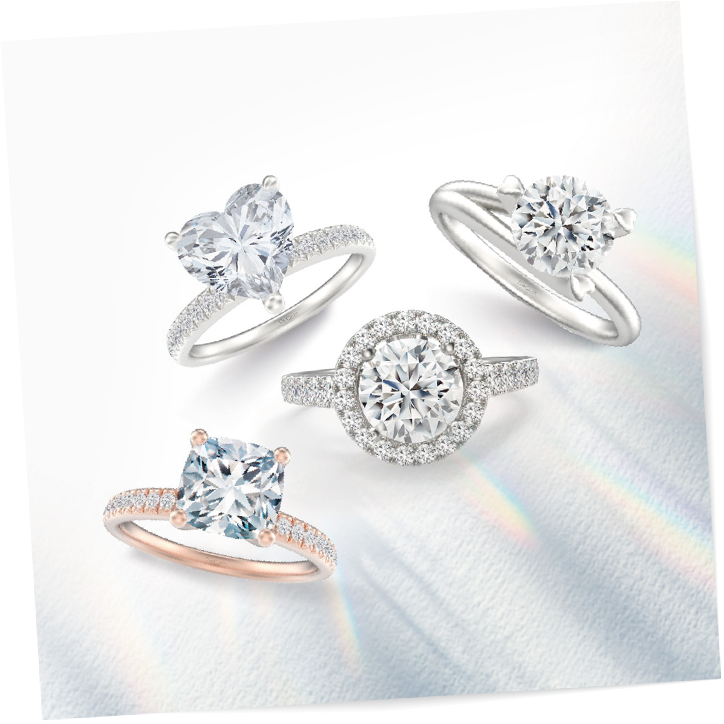
Conclusion
Whenever possible, we do recommend getting an Excellent cut or Triple Excellent cut for your diamond, because
this is the defining criteria that makes the diamond reflect and refract light perfectly.
As for
the other 4Cs, there is no right or wrong answer but you may have certain requirements about which of the 4Cs
you want to prioritise. There are customers who prefer a bigger Carat weight and stone measurement, versus
customers who prefer higher Colour grades as a priority.
A simpler way to determine what diamond
options are best for you may be to input your ideal price range in our GIA diamond widget, and select from
available options. Then you may adjust the other 4Cs to explore other possibilities.
With over 40 years of experience in the jewellery and gemstone industry, DeGem is one of the region’s most
stylish and contemporary jewellery retailers. To provide further personalization, the brand offers “haute
joaillerie” or made-to-order jewellery services.
DeGem’s distinctive diamond jewellery have been
spotted on international celebrities such as Reese Witherspoon, Awkwafina, Idina Menzel and Janelle
Monae.
As an expert in sourcing gems straight from a strong supply of ethical miners, and owner
of a homegrown in-house factory, DeGem caters to discerning customers who appreciate premium construction,
finishing and quality.
Why Design your Dream Ring with DeGem?
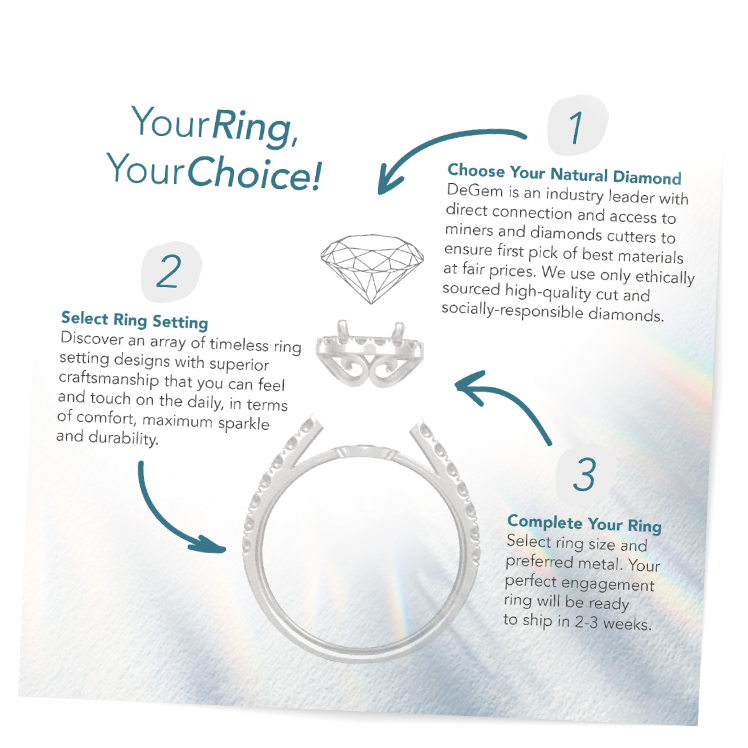
On https://www.degemdiamond.com/gia you can select across over 20 DeGem exclusive signature ring designs, all crafted with superior craftsmanship that you can feel and touch on the daily.
With each custom ring purchase, customers get to enjoy:
Lifetime free cleaning at DeGem boutiques.
Luxe DeGem Box & Secure Packaging.
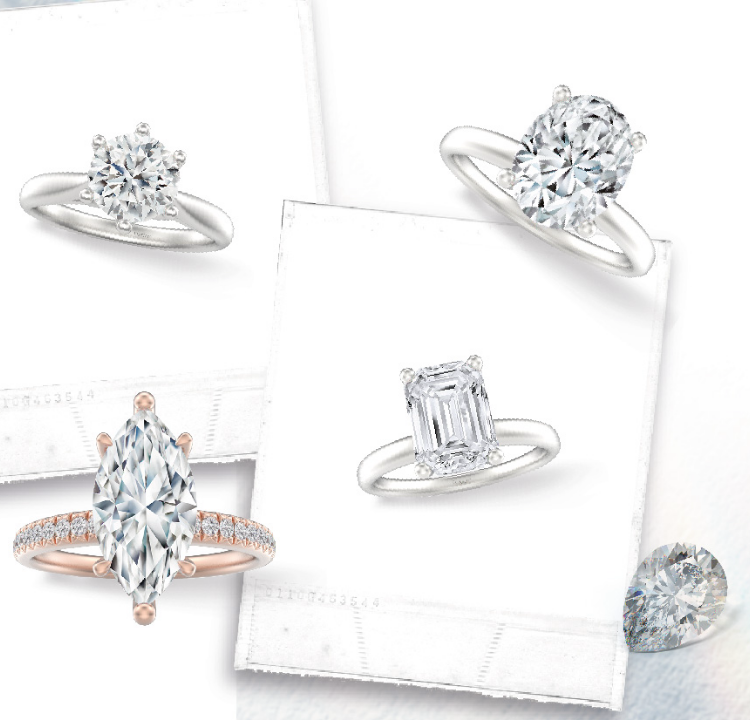
What are GIA Diamonds?
GIA diamonds simply mean natural diamonds that are graded by the Gemological Institute of America (GIA), which
is the industry’s leading independent third party grading laboratory. As a nonprofit organisation, GIA is the
pioneer in creating the Diamond 4Cs and the International Diamond Grading System™, which to-date are still the
universal benchmarks by which all diamonds are judged.
The GIA diamonds offered on our website are
graded by GIA, and thus come with their own GIA grading reports, or known as certificates in the industry.
This report is an unbiased assessment of a stone’s quality characteristics. It is what the insurance industry
uses as a basis for insuring your diamond, and what the diamond industry recognises worldwide for the resale
of any diamond.
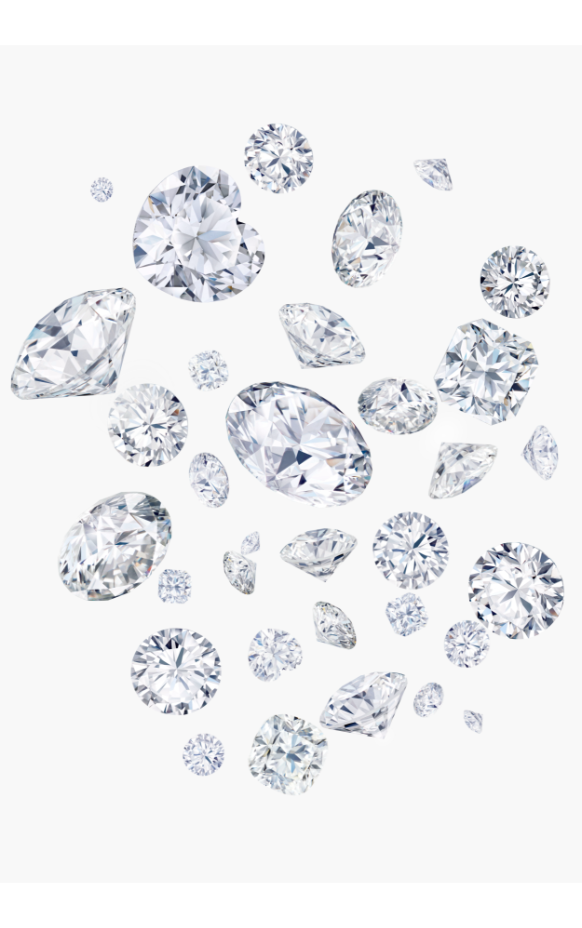
When you first begin your search for diamonds, you’re going to learn about the 4Cs – Cut, Colour, Clarity
and Carat. These are a combination of standard factors to determine the quality and value of
diamond.
Once
you get a grasp on how they affect the look and price of diamonds, you’ll be ready to effectively select
high-quality options within your price range.
Understanding the 4Cs of Diamonds
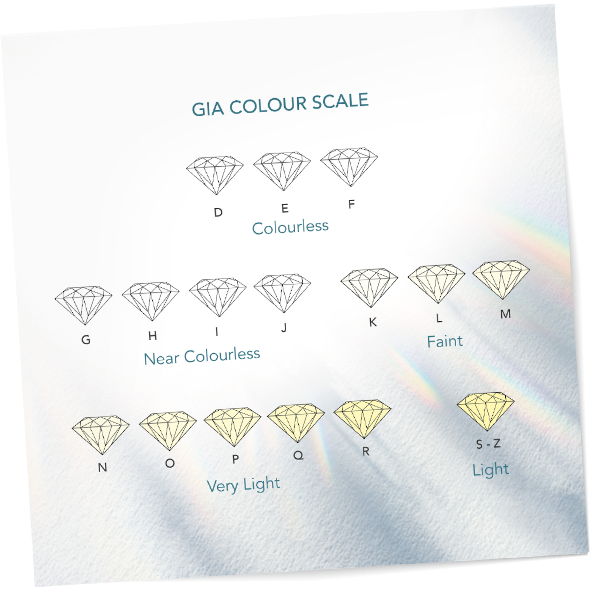
Diamonds come in an assortment of colours, but the most valued colour is actually an absence of colour. The
less colour in the diamond, the rarer and more valuable it is.
D is the highest grade in terms of
rarity, which
is an icy white, and the colour grades move down from D to Z.
If you would
like to have a diamond that is rare, you can aim for D, E, F colour grades, though you should note that the
difference between D, E and F colours are not substantial unless inspected closely by a professional.
For a diamond with little or no noticeable colour to the naked eye, a near-colorless grade of
G-I is still beautiful to have. The little tint, be it yellow or brown, is most visible when you compare all
the grades side by side.
Colour
A diamond’s cut is not so much about its shape, but more of a measure of light performance. The Cut grade is
the measure of a diamond’s light performance, based on how well its proportions are cut by stone cutters to
refract and reflect light to show fire, brightness and scintillation.
The Cut grade is also the
most important C, because if you prioritise this, you can get a diamond with maximum sparkle.
GIA
classifies diamonds in five cut grades – Excellent, Very Good, Good, Fair and Poor. They are determined
based on a combination of various proportion sets, which refer to the relationship between table size, crown
angle and pavilion depth. Cut with proper proportions, light is returned out of the diamond. If it’s cut too
shallow, light leaks out of the bottom; too deep and it escapes out
of the side.
We only
curate diamonds with a cut grade of ‘Good’ and above to ensure maximum satisfaction for your diamond
quality.
A diamond which scores Excellent for Cut, Polish and Symmetry grades is the top in
maximising light performance, and called a Triple Excellent diamond, which means that it is a diamond with
the best possible craftmanship, and the diamond gives off maximum light and fire while having an attractive
pattern.
Cut
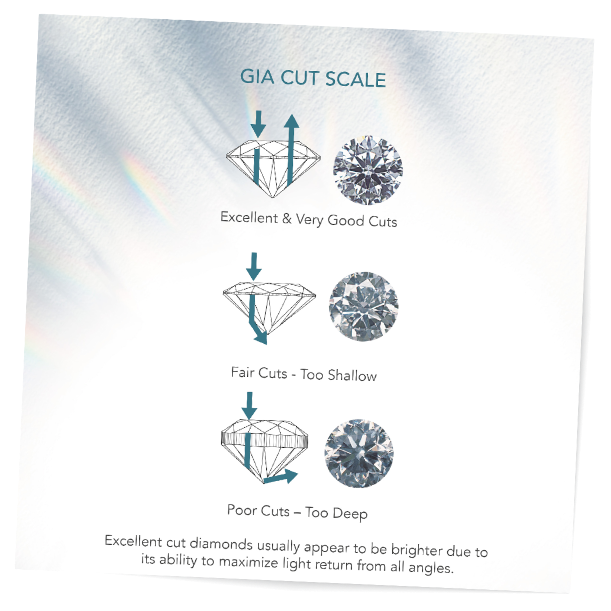
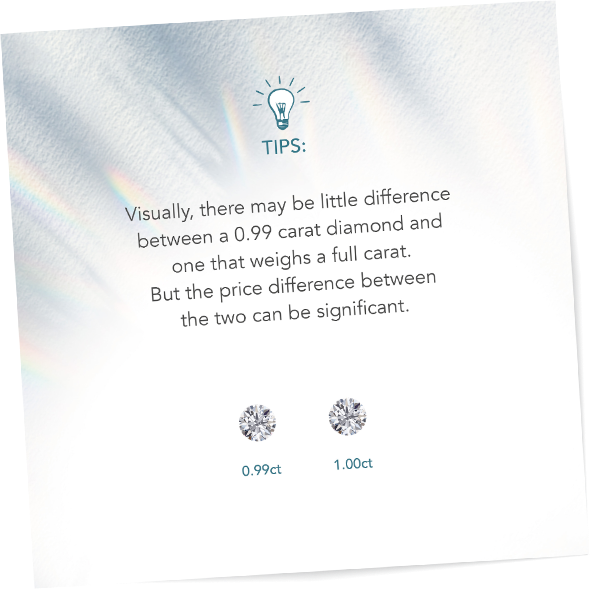
Carat
One of the most commonly asked questions about a diamond is “how many carats is it?”, but what exactly is a
carat? It is simply a measurement of the weight of the stone.
One carat weighs 0.2 grams. The
higher carat it goes, the higher the premium it can demand. Especially once the carat weight goes above 1ct,
that’s where you can see the steep climb in value. This is because it is not that easy to mine 1 carat size
diamonds. Fewer than one in one million mined rough stones are large enough to produce a finished 1 carat
diamond.
However, keep in mind that the true value of the diamond is reflected in a combination of
all the 4Cs and not by any on its own. Two diamonds of equal carat weight, can have very different quality and
price when the other three Cs are considered.
It is common for natural diamonds to have microscopic imperfections as a result of exposure to extreme heat
and pressure within the earth. Think of them as the diamond’s birthmarks. These characteristics are called
‘inclusions’ when they are within the stone and ‘blemishes’ when they are on the surface.
Clarity refers to the extent to which these imperfections are present; the less there are, the
higher the value of the stone. The GIA Clarity Scale has six categories for grading, but most impurities are
invisible to the naked eye.
The VS (Very Slightly Included) clarity grade refers to diamonds that
have small inclusions that are difficult to identify without magnification. While VS1 diamonds have
inclusions that are smaller in number, size and location, VS2 diamonds are lower in price and also usually
eye-clean. This means that the inclusions tend to not be visible to the untrained eye, making it a popular
choice for engagement rings.
A more affordable option would be the SI1 (Slightly Included)
clarity grade. As its name suggests, SI diamonds have small imperfections that can be detected with ease
using magnification; but here’s a tip: choose one with inclusions that are not in a central position in the
stone and it may appear flawless to the casual observer.
Clarity
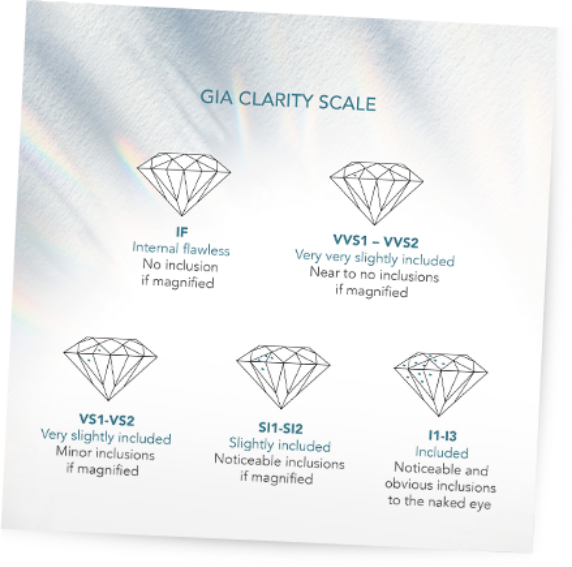

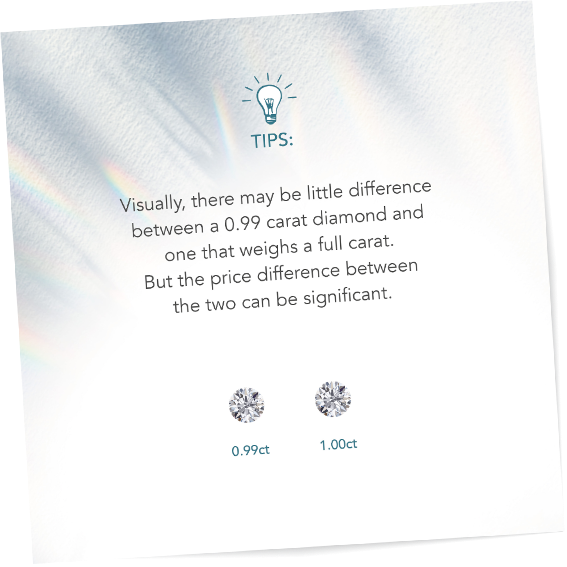
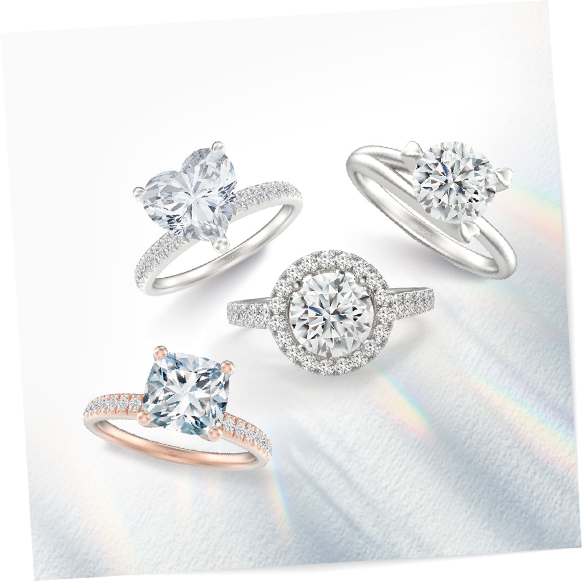
Conclusion
Whenever possible, we do recommend getting an Excellent cut or Triple Excellent cut for your diamond, because
this is the defining criteria that makes the diamond reflect and refract light perfectly.
As for
the other 4Cs, there is no right or wrong answer but you may have certain requirements about which of the 4Cs
you want to prioritise. There are customers who prefer a bigger Carat weight and stone measurement, versus
customers who prefer higher Colour grades as a priority.
A simpler way to determine what diamond
options are best for you may be to input your ideal price range in our GIA diamond widget, and select from
available options. Then you may adjust the other 4Cs to explore other possibilities.
With over 40 years of experience in the jewellery and gemstone industry, DeGem is one of the region’s most
stylish and contemporary jewellery retailers. To provide further personalization, the brand offers “haute
joaillerie” or made-to-order jewellery services.
DeGem’s distinctive diamond jewellery have been
spotted on international celebrities such as Reese Witherspoon, Awkwafina, Idina Menzel and Janelle
Monae.
As an expert in sourcing gems straight from a strong supply of ethical miners, and owner
of a homegrown in-house factory, DeGem caters to discerning customers who appreciate premium construction,
finishing and quality.
Why Design your Dream Ring with DeGem?
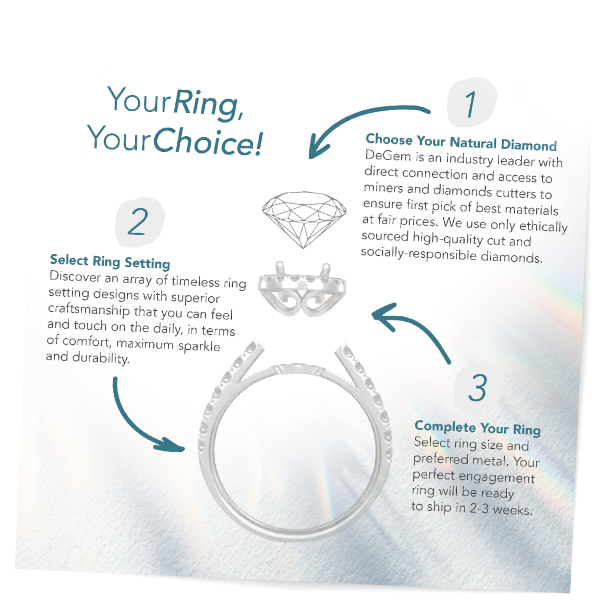
On https://www.degemdiamond.com/gia you can select across over 20 DeGem exclusive signature ring designs, all crafted with superior craftsmanship that you can feel and touch on the daily.
With each custom ring purchase, customers get to enjoy:
Lifetime free cleaning at DeGem boutiques.
Luxe DeGem Box & Secure Packaging.